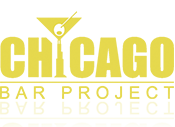 What is now a mundane parking lot of the United Center was once the “Bucket of Blood,” the rather sensational nickname of the New Delaware. Not much is known when this West Side legend got its start but the tavern first appears in the newspapers in 1916 for selling liquor after hours: “It is a small, dark, sordid, dismal place and we couldn’t stand it very long,” (“Five Cabarets Violate Law, Aldermen Hear,” Chicago Tribune, February 25, 1916).
What is now a mundane parking lot of the United Center was once the “Bucket of Blood,” the rather sensational nickname of the New Delaware. Not much is known when this West Side legend got its start but the tavern first appears in the newspapers in 1916 for selling liquor after hours: “It is a small, dark, sordid, dismal place and we couldn’t stand it very long,” (“Five Cabarets Violate Law, Aldermen Hear,” Chicago Tribune, February 25, 1916).
The Bucket of Blood was once owned by George B. Dugdale, who’s wife was indicted for the death of Marie Benzing resulting from a botched abortion. The saloon then passed on to new owners Finkelstein & Martini, and ultimately to Jimmy Murphy. After what seems to have been numerous busts and other brushes with the law, it was finally Prohibition that put an end to the notorious Bucket of Blood.
Not much is known when this West Side legend got its start but it may have been inspired by a tavern in the Levee District on the Southwest corner of 19th St. at Federal (now a townhome complex). This predecessor is described as follows on the Chicago Crime Scene Project: “Across Federal Street from the Bucket of Blood was the cheapest group of brothels in the city, affectionately known as ‘Bed Bug Row,’ which operated until 1913. A woman could be had there for $0.25, and there were also peep shows, torture chambers, and drug dens where heroin and morphine could be purchased openly (neither was illegal until the 1910s). The “King and Queen of the Cokies,” as they were known, Eugene and Lottie Hustion, operate one of these dens. Lottie Hustion was a learned woman who spoke five languages and composed music when not doing business.”
“Commercial sex existed to suit every pocketbook. Bed Bug Row, at Nineteenth Street and Armour Avenue, was a dismal collection of wooden shacks where black prostitutes serviced clients at twenty-five cents a session. The Bucket of Blood and the California charged $1 for a woman, but the method of assignation was scarcely classier: girls in transparent gowns would parade before men seated on benches, waiting selection. At Black May’s, patrons could watch a circus that was as obscene as they ere willing to pay for. Customers found companionship among the better-class parlor houses, such as French Emma’s, Vic Shaw’s, or the Casino. For Chicago’s wealthy, there was the Everleigh Club.”
– excerpt from The man who got away: The Bugs Moran Story by Rose Keefe (2005)
Where did the nickname “Bucket of Blood” come from? In Chicago’s more violent past, bar owners would wash the floors at the end of the night and, when there were fights or stabbings, the remains would be mopped up and wrung out into a bucket. The water, stained red with blood, would be thrown out onto the street, making it appear as if the whole bucket were filled with blood, hence the name. Today, the Bucket of Blood still operates in Virginia City, Nevada, just as it has since 1876.
